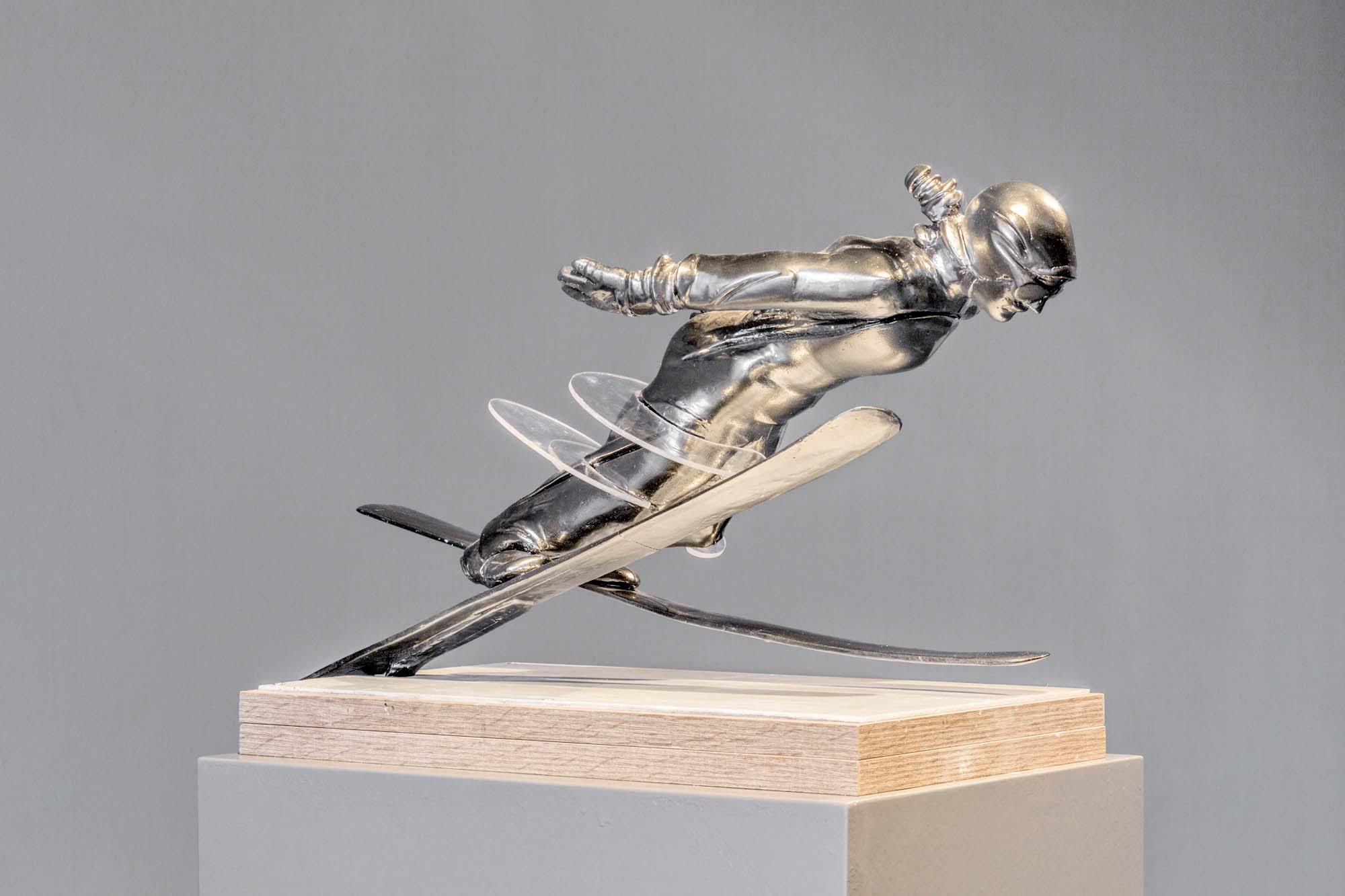
A figure skater, frozen in the dizzying movement of the Biellmann pirouette, half figurative, half abstract, with fractures and intersected by circular glass discs: With the monumental sculpture figure skater by the Greek sculptor FOTIS, the Noack Gallery presents a work that poses riddles and invites contemplative observation.
The Biellmann pirouette is one of the most demanding figures in figure skating. The figure skater rotates around her own axis on the supporting leg, the body is bent at a right angle and the other leg is extended in line with the body.
As the rotation becomes faster and faster, one hand reaches backwards in a lateral hyperextension and grips the runner of the free leg. The body is then straightened and the second hand is placed on the runner above the head. The leg and arms now form an arch over the compressed body. During this slow process, an incredible rotational speed is maintained. The figure requires years of training, not only in terms of the movement sequence, but also the athlete's tolerance for dizziness requires a retraining of their own perception. Fotis' work also challenges us to do this.
The naïve approach via the motif quickly leads us into the deeper layers of meaning and an examination of the pictorial decisions. For the ambivalence between the cruel deformation of the body and its beauty in the aestheticisation of the figure is reflected in the sculptural design. In order to shine in the sporting arena, the body must be subjected to a strict regime for years and also stretched to the limit in the preparation of the figure. The immediate impression of the sculpture's beauty thus consistently receives its counterpoint in the shifted proportions of the arms and legs, the abstracted, almost negated head and the fractures in the otherwise taut bronze surface, especially at the joints. Although the figure skater is of course far removed from a realistic depiction, she nevertheless evokes the subjective experience of the viewer when they see the figure in question. The torso appears very foreshortened and the arms and legs, which are necessarily muscular in this sport, wrap around the body and deform it in an improbable way.
The three circular glass discs inserted into the sculpture also give food for thought. As Fotis explains in his text "Reflections", they serve in many ways to expand the three-dimensional figurality of the sculpture by adding a medium that integrates the flow of time, and thus the fourth dimension, into the sculpture as a whole. For the glass pane is not only transparent, it also serves as a light screen and reflects images and impressions from the immediate surroundings, be it the colour of the sunset, clouds passing by in the sky or the trembling of the leaves of a treetop, and inserts them as a dynamic element into the static bronze.
Fotis was born in Greece in 1940. He studied at the Athens School of Art and at the Academy of Arts in Berlin, where he has lived since 1971. His travels have taken him back to his home country, including as an art professor in Thessaloniki, as well as countless exhibitions throughout Germany, Belgium and Japan. His work has been honoured many times over.









